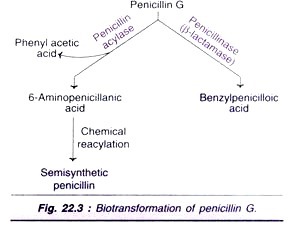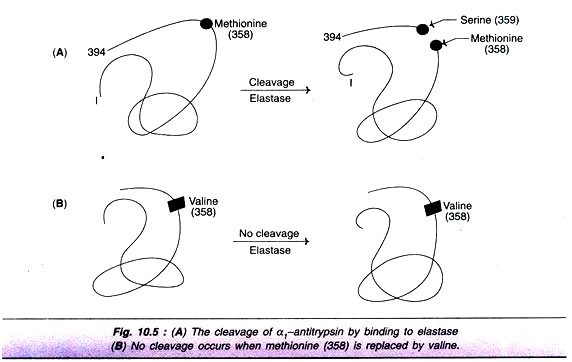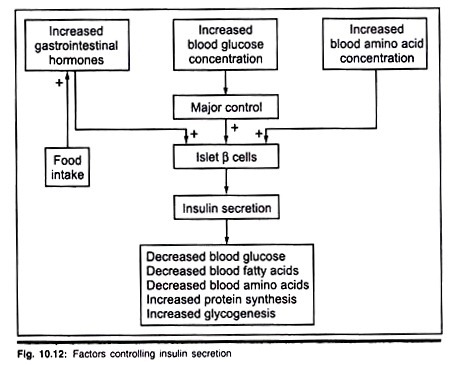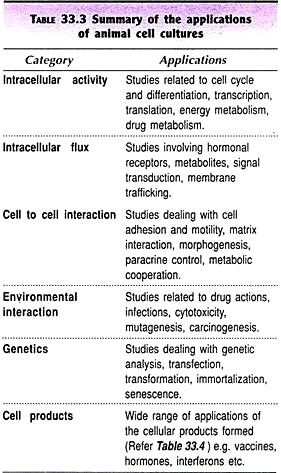Positive Impacts of Flood on Biodiversity:
This national park developed naturally with its numerous biodiversity.
Therefore, regulated flood and its quick recession is no doubt beneficial for the ecosystem as well as related biodiversity of the park in many ways.
Maintenance of Vegetation Status and Soil Formation:
The annual floods coupled with the annual burning of the grassland are the two most important and major factors, which influence the vegetation of the park. Flood is responsible for creating different site conditions and soil formations, preferred by different types of vegetation.
Flood in Kaziranga National Park is one of the most important factors for maintaining the present vegetation status and for arresting any further progress in the process of plant succession. It is observed that fire and annual flood play an important role in soil profile dynamics and development by erosion of the topsoil and by fresh deposition of silt/sand. The process is repeated every year in the park, which helps in formation of fresh vegetation.
Breeding Ground of Fish:
Various streams and beels of the Kaziranga National Park serve the purpose of breeding grounds and nursery for large fish population. As soon as the floodwater enters the park, a vast area gets submerged and the fishes found in the numerous beels and nallahs come out to lay eggs in the current of the floodwater. Some fishes from these areas also go into the Brahmaputra River along with the receding flood. Therefore, during flood or just after receding of the flood, fishes are found in abundant quantity in the river Brahmaputra and its tributaries.
Cleaning of Water Hyacinth and Better Conditions for Birds:
The beels and other waterlogged areas are generally carpeted with water hyacinth, which is unpalatable for herbivores of the park. The cover of water hyacinth helps water bodies becoming shallow and harms the existing wetland ecosystem. The floodwater also helps in washing away the water hyacinth from beels, streams and nallahs, which grow into a very thick, impenetrable cover. After the flood, the fresh water with very few water hyacinth gives way to the water birds like ducks, herons, pelicans and so on. After floods, the healthy stock of fish in the beels or other water bodies helps in providing food to the bird community of the park.
Replenishment of Beels and Other Water Bodies:
Kaziranga National Park is a suitable habitat for Indian one horned rhinoceros due to its wetland ecosystem and presence of necessary conditions. The water of the various beels of Kaziranga National Park becomes very shallow during dry season, which affect the habitat suitability of rhino as well as other water loving animals. Annual flood replenishes the dry water bodies and streams with high amount of water and makes it again suitable for these animals. Flood also maintains the water quality through cycling.
Negative Impacts of Flood on Biodiversity:
In recent years, flood has become a common feature in the park with its increasing magnitude. Flood has its both short-term as well as long-term negative impact on its biodiversity and both results into severe destruction to the whole ecosystem.
Casualties of Animals:
The worst and the most pathetic situation is that some animals especially the calves and the aged ones and the deer species are sometime washed away by the current of the flood of turbulent river Brahmaputra. In the year 1998 the flood of river Brahmaputra had inundated more than 95 per cent of the park area causing tremendous devastation by its waves. The animal mortality during the flood went up to 629, where numbers of rhinos being 39 and the worst affected hog deer being 506 (Tables 5, 6, 7).
There is a correlation between the magnitude of flood and the quantity of biodiversity of the area. Flood causes animal as well as floral morality in the national park. Moreover, the stated relation between flood and quantity of biodiversity can be emphasized with the comparison of the percentage increase/decrease in some selected animal population (Figure 1) and flood level taken in different areas of the park in different years (Figure 2). It also correlates with the percentage area submerged by flood in different years.

 The flood level in different years of Kaziranga National Park shows that, flood of 1987, 1988, 1998 and 2002 were the most dangerous among the stated years, where there is more than three metres of height in number 2 Mihi Tower. The animals, most affected by flood are rhinos, swamp deer, samber, hog deer, wild boar etc. Percentage increase of these animals taking 1966 as the base year shows a stable growth up to 1984 except elephant and samber.
The flood level in different years of Kaziranga National Park shows that, flood of 1987, 1988, 1998 and 2002 were the most dangerous among the stated years, where there is more than three metres of height in number 2 Mihi Tower. The animals, most affected by flood are rhinos, swamp deer, samber, hog deer, wild boar etc. Percentage increase of these animals taking 1966 as the base year shows a stable growth up to 1984 except elephant and samber.
After that there is a steep fall in percentage increase of almost all the animals. The basic reason of steep decreasing slope in the percentage increase lines of the animal is that the devastating flood of 1988 destabilized the whole ecosystem of the park.
They could not keep pace with earlier increasing status. The main cause of this decrease is considered to be flood. Population of samber also shows a negative trend due to the 1988 flood. After 1988, there was another great flood in the park in the year 1998, which also correlates with the decreasing trend of the animal population like rhinos, samber, swamp deer and so on.
Once again, the devastating flood of 1998 has disturbed the stable growth of animal population with its direct or other indirect short-term and long-term impacts. Moreover, every year, flood deposits a thick layer of silt on the ground of the park and the some smaller species of plants along with its seeds are buried under metres of thick silt deposition and thus these species have disappeared from the park.
Migration of Animals and Related Problems:
As soon as the park is submerged by the incoming floodwater the animals of low lying areas of the park start migrating to the Karbi Anglong hills. As the surrounding areas of the park are populated, protection of animals during the period of migration from and back to the park becomes an uphill task. During their migration from the park to Karbi Anglong hills, they have to cross the National Highway 37 where heavy vehicles ply round the clock. During floods a considerable number of wildlife are lost due to knock down by fast moving vehicles.
Shortage of Fodder and Malnutrition:
The grazing animals in the Kaziranga National Park severely suffer from shortage of fodder during flood situation. During floods, all the grasslands are submerged under water. Even, sometimes undergrowth of the forested areas also gets submerged under water during high floods. As a result, grazing animals have to suffer from shortage of fodder and malnutrition.
Erosion Due to Flood and Impact on Habitat:
Soil erosion is a serious problem in Kaziranga National Park during summer floods. Erosion is primarily attributed to the instability of the river in this region. This can be understood through the changing bank line from 1967-68 tol998 as seen on base map and IRS-IA and IRS-ID data. Considering the retreating level, the park has lost 28.87 sq. km of area due to erosion during 1967 to 1998. Again, a number of floral species have disappeared in the river water with the eroded land (SAC, 1999).
Siltation and Impact on Habitat Suitability:
Beels and other perennial water bodies inside the national park are extremely natural without human interference. But with increasing flood of the river Brahmaputra siltation occurs, which results into fragmentation of beels. This again results in the overall reduction of the area under water bodies.
In 1967-68, wetland occupied 36.6 sq. km (8.5% of the total area) of area, which decreased to 27.4 sq. km (6.7 % of the total area) by 1997, thus showing an overall decrease in the area under wetlands. Thus, soil erosion and sedimentation, which directly or indirectly influence the water regime changes, result in rapid alteration of community structure (IIRS, 1997).
Damage to Infrastructure and Disruption in Communication:
The floods generally cause considerable damage to the anti-poaching infrastructure, namely, roads, bridges, patrolling path, guard camps of the park. During the flood season, communication between the various camps and with the range headquarters becomes very difficult.
Suggestions:
The park environment provides an ideal habitat for majority of the herbivores, which constitute 98 per cent, as well as the carnivores, which constitute 2 per cent of the biodiversity. The present study has highlighted the environment and other problems related to the flood disaster of the area. Some suggestions are worth mentioning to achieve sustainability in the park ecosystem (Directorate, Kaziranga National Park, 2002).
1. Effort should be made to increase the area under beels and short grasses wherever possible. Therefore, artificial but ecologically viable depressions should be created. Moreover, desiltation programmes should be carried out in a more scientific way to make the existing water bodies more suitable for the park animals.
2. Though tree species should be increased in some particular areas but succession upon the grassland should be prevented. Tall grasses should be burnt for this purpose. But the way of burning should be proper and scientific such as there is no loss of any endangered species.
3. The provision of providing shelter to wild animals during flood season has to be made inside the park itself. For these, elevated platforms of the size of about one hectare or more have to be created, planted and maintained.
4. Addition of proposed areas to the present park territory will not only provide additional land but also corridors needed for animal movement and migration. It will also legally prevent the encroachment by the people on the park boundary.
5. Attempts should be made to minimize the impact of river current along the northern boundary of the park by adopting proper ecologically viable engineering measures. This will prevent the habitat loss and siltation during floods to a large extent.
6. The park should be monitored annually on a regular basis to detect the changes in the landmass and water bodies due to erosion, accretion and siltation. Remote sensing could serve as an effective tool to accomplish this job timely and cost effectively (Singh and Kumar, 2004).
7. People’s participation and government initiative are two necessities for fulfilling every step for the well-being of the national park. Moreover, awareness programmes and environmental education should be carried out so that the villagers feel themselves as the proper custodian of the park.


